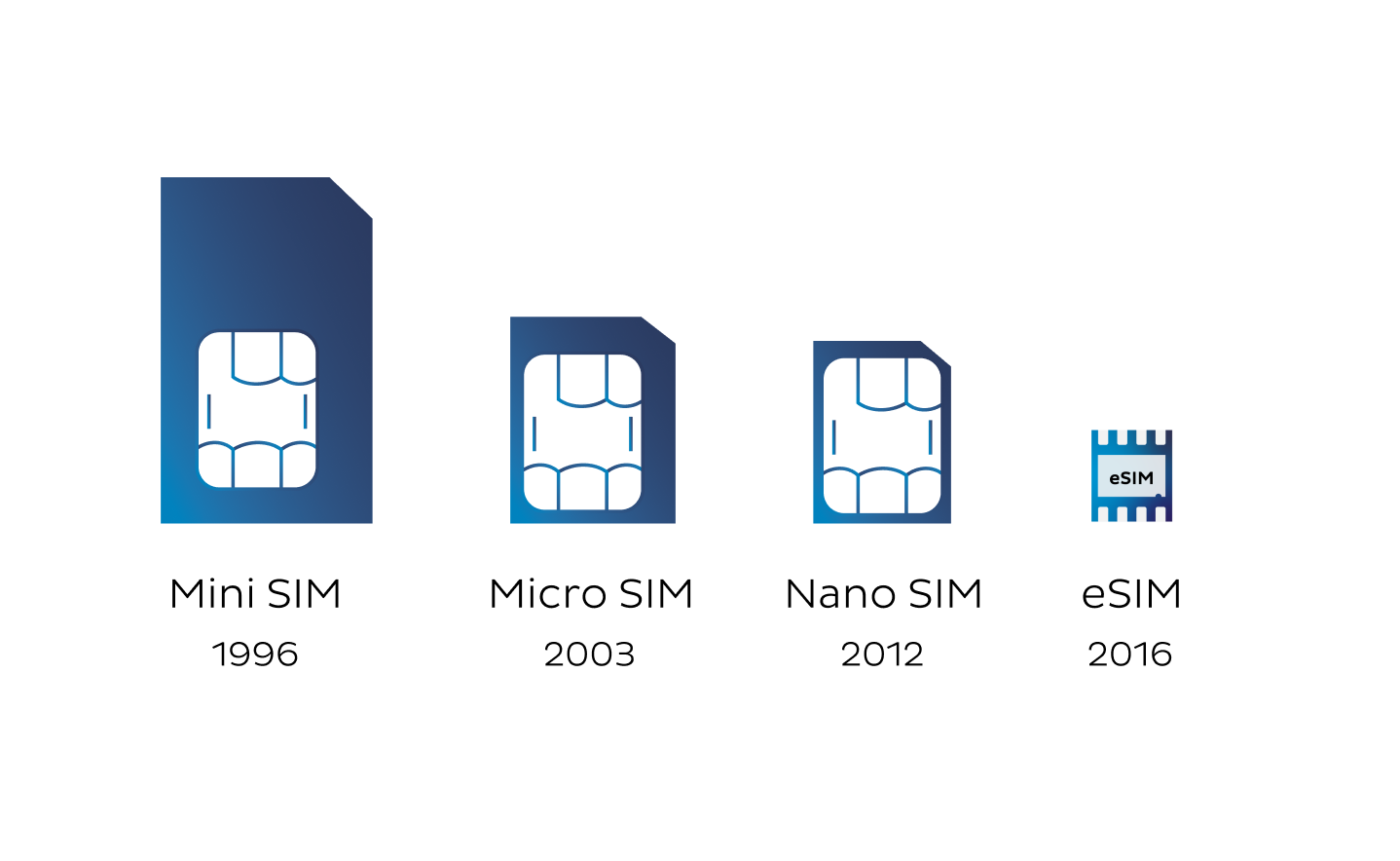Operators have seemed hesitant to push the benefits of eSIM to their customers, despite embedded SIMs playing a role in Internet of Things (IoT) technology for several years. But there are several reasons why now, more than ever, eSIMs could be getting the impetus they deserve. So, why are we in the era of the eSIM?
Telcos have been reluctant to take up eSIMs. In some ways, who can blame them? After all, removing the physical SIM and embedding eSIM technology into a mobile device removes much of the hassle of changing service providers and makes it far easier for customers to switch, if they’re drawn in by a better deal. However, there are many reasons why eSIMs are a telco’s friend, not a foe. And against the current backdrop of remote working, ever-evolving tech and major shifts in the way we do business, now is the time for this reluctance to fade.
Taking flight
No longer is it necessary to purchase plastic SIM cards when travelling to new countries. Thanks to remote SIM provisioning, all customers need to do to obtain the best network and service in their destination of choice is have access to an eSIM-capable device, install an app, select a network plan and purchase. Most eSIM services will email over a QR code for the user to scan in order to activate the device, although others offer in-app eSIM provisioning for an even smoother experience.
Multiple plans can be stored on a single eSIM-capable device, and used when required. This isn’t only beneficial for end-users — service providers are also able to work more flexibly and present various plan options to customers without the cost of distributing new cards. eSIMs can help providers maintain their competitive advantage, rather than hinder it.
Multiple choice
It’s also worth noting that there are far more eSIM-compatible devices on the market nowadays. eSIM first gained popularity in consumer devices when Apple launched the technology in its iPhone XS in 2019. At the time, the device retailed at around $999, or roughly £720 — placing it at the higher end of mobile device affordability.
Now, just a few years later, mid-range Apple devices such as the iPhone SE and iPhone 12 Mini have been produced with eSIM capabilities. Many of the latest Android phones also support eSIM, including the Samsung Galaxy S20 and 21 and multiple generations of the Google Pixel, to suit all customer preferences.
According to GSMA Intelligence, the definitive source of data and analysis for the mobile industry, 110 eSIM consumer devices were launched as of December 2020.
RECOMMENDED READING:
The new eSIM-only iPhone: one small step for Apple, one giant leap for telecoms
5G ready
eSIMs will also help mobile users make the most of other trending technologies, such as 5G. It’s clear to see that 5G still faces a rather lethargic rollout across the globe, and there are still hurdles to overcome before we see its complete adoption. But mass use of eSIMs could help to change this.
Embedded SIMs still play the same integral role in 5G networks as their nano, micro, mini and full-size SIM card predecessors — identifying and connecting devices to the Global System for Mobile Communication (GSM). However, fully integrated, 5G-capable eSIM propositions offer a level of digital reach older SIM technology cannot. A device owner will be able to switch cellular carriers without having to switch SIMs or visit a provider and, when traveling abroad, eSIMs will use international GSMs seamlessly.

For businesses that use the GSM to stay connected, the eSIM will help them manage their networked assets wherever they are in the world, and with more agility. As we continue working towards a complete 5G rollout, eSIMs could be key in offering seamless adoption to those who want to profit from the technology.
Lessons to learn
However, while new ways of working and the latest mobile tech foster an ideal environment for eSIM adoption, the technology’s widespread uptake still largely depends on decision-makers understanding its value. We’ve already discussed eSIM’s flexibility and ease of use for customers, but what’s the business case for service providers?

Advantages for service providers can be divided into cost-saving and revenue-boosting activities. As part of the former, and without the customary process of sending plastic SIM cards to customers, service providers are able to streamline their logistics, reduce costs and drive greater use of digital distribution channels. As an inherent part of this process, relating to the latter benefit, service providers can enhance the customer purchasing process with simple onboarding and streamlined in-app provisioning.
RECOMMENDED READING
To find out more about eSIM, read our eSIM whitepaper
When eSIMs first made it into the consumer realm, digital onboarding often required a QR code that customers needed to scan upon beginning their contract. Now, to make things even simpler, users can download the operator’s mobile app and activate their eSIM profile in just one tap. Mobilise’s latest solution — eSIM as a Service — uses in-app eSIM activation, making the onboarding experience quick and uncomplicated. This option removes the need for visual explanation and step-by-step instructions, so users can focus on the things they want from their service provider, like staying connected.
At Mobilise, we have seen the penetration of eSIM capable devices increase from five per cent twelve months ago to 35 per cent now. Following this trajectory, by the end of 2022, we expect to see 70 to 80 per cent market penetration of eSIM capable devices in Europe. Front runners deploying eSIM early will have the benefit of competitive advantage, while others, before long, will find themselves racing to catch up. Now truly is the era of the eSIM.



